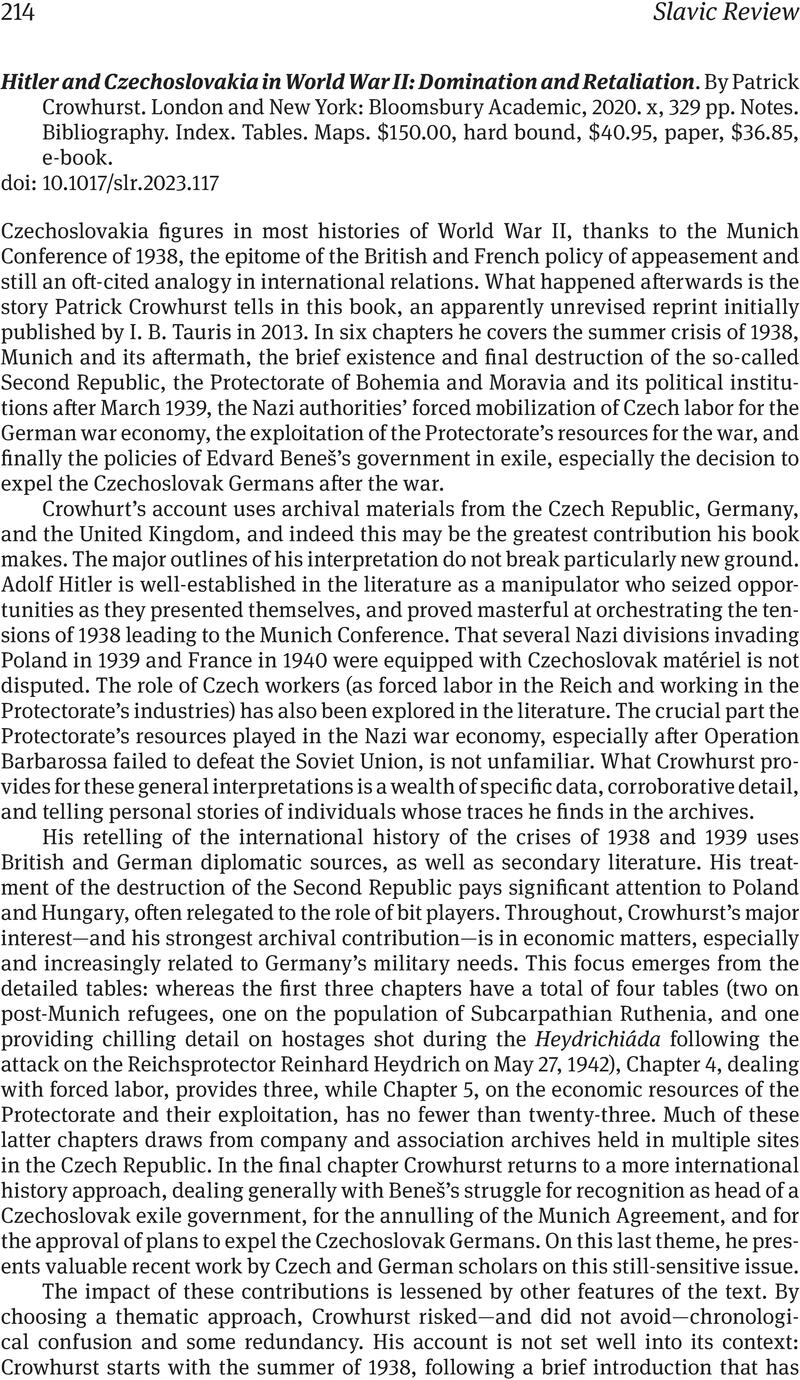No CrossRef data available.
Article contents
Hitler and Czechoslovakia in World War II: Domination and Retaliation. By Patrick Crowhurst. London and New York: Bloomsbury Academic, 2020. x, 329 pp. Notes. Bibliography. Index. Tables. Maps. $150.00, hard bound, $40.95, paper, $36.85, e-book.
Review products
Hitler and Czechoslovakia in World War II: Domination and Retaliation. By Patrick Crowhurst. London and New York: Bloomsbury Academic, 2020. x, 329 pp. Notes. Bibliography. Index. Tables. Maps. $150.00, hard bound, $40.95, paper, $36.85, e-book.
Published online by Cambridge University Press: 03 August 2023
Abstract
An abstract is not available for this content so a preview has been provided. Please use the Get access link above for information on how to access this content.

- Type
- Book Review
- Information
- Copyright
- Copyright © The Author(s), 2023. Published by Cambridge University Press on behalf of the Association for Slavic, East European, and Eurasian Studies


